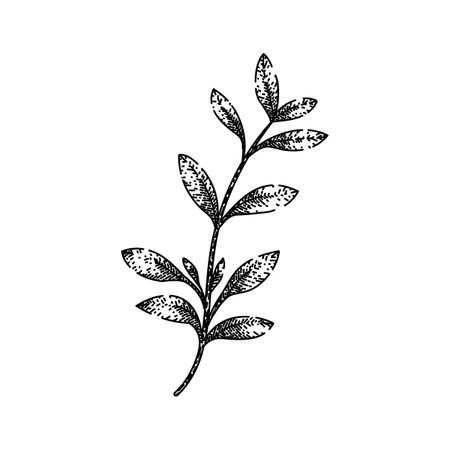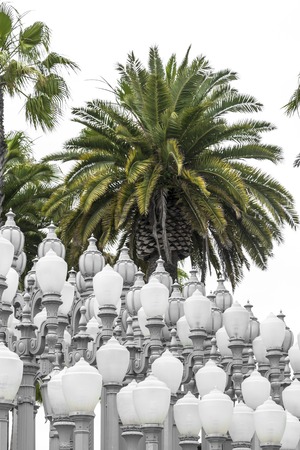Introduction to Palmistry in British History
Palmistry, also known as chiromancy, has woven a curious and sometimes enigmatic thread through the fabric of British history. Arriving on these isles during the medieval period, its origins can be traced back to ancient civilisations such as India, Egypt, and Greece. However, it was not until the early modern era that palmistry truly began to capture the imagination of Britain’s upper echelons. The aristocracy, ever fascinated by omens and the possibility of deciphering destiny, embraced this art with an avid curiosity. Within the hallowed halls of the Royal Court, whispers abounded regarding the secrets one’s hands might reveal about lineage, fortune, or even the fate of a dynasty. Stories tell of monarchs and nobles alike consulting skilled palmists to gain insight into their futures or affirm their divine right to rule. Thus, palmistry became more than mere entertainment—it was seen as both a science and an augury, deeply intertwined with British notions of power, legitimacy, and personal destiny.
Royal Fascination: Palmistry at the Tudor and Stuart Courts
Throughout British history, the allure of palmistry—known in local parlance as “cheiromancy”—was not limited to the common folk. At the height of the Tudor and Stuart dynasties, the courts themselves became fertile ground for mystical arts, with monarchs and nobles alike showing keen interest in the secrets said to be hidden within their own hands. While historical records are often tinged with myth, there is a wealth of intriguing tales suggesting that figures such as Queen Elizabeth I and King James VI sought guidance from palm readers and fortune tellers.
The Monarchs and Their Mystical Interests
Elizabeth I, famously pragmatic yet deeply superstitious, was rumoured to have consulted astrologers and palmists on matters ranging from statecraft to personal affairs. Her reign saw a blending of Renaissance curiosity and ancient folklore, giving rise to an environment where court magicians like John Dee were both advisors and confidants. Similarly, James VI of Scotland (later James I of England), known for his fascination with witchcraft and the occult, reportedly entertained various seers who read his palm in hopes of divining future events for the realm.
Courtly Encounters with Palmistry
| Monarch/Noble | Period | Reported Engagement with Palmistry |
|---|---|---|
| Elizabeth I | Tudor (1558–1603) | Consulted palmists alongside astrologers; folklore claims she had her fate read before major decisions. |
| James VI/I | Stuart (1567–1625 Scotland; 1603–1625 England) | Keen interest in divination; stories suggest he invited palm readers to court during political turbulence. |
Myths and Realities in Courtly Circles
While some accounts may be embellished by time, contemporary diaries and letters make frequent reference to noble households inviting “wise women” or itinerant fortune tellers to entertain—and sometimes advise—their hosts. The mingling of mysticism with political intrigue created a unique atmosphere at court, where a reading of one’s lifeline or fate line might be as much about reassurance as it was about genuine belief. These stories persist in British cultural memory, serving as reminders of a period when royal hands were seen as both symbols of power and objects of mystery.

3. The Hands of Queens and Kings: Myths versus Reality
Throughout the ages, the palms of British monarchs have inspired not only reverence but also a tapestry of myths. The fascination with royal hands is rooted in the belief that they reveal destiny and character—a notion woven through centuries of British folklore.
Queen Victoria’s ‘Fortunate’ Lines
Queen Victoria, emblematic of an era defined by progress and empire, was often said to possess ‘fortunate’ lines upon her palm. Victorian society, deeply superstitious yet enamoured with science, speculated that these markings signified wisdom, benevolence, and imperial luck. However, no historical record confirms that her palmistry differed greatly from any other noblewoman of her time; rather, these stories reflected the public’s desire to see their sovereign as divinely guided.
The Legend of Richard III’s ‘Crooked’ Hand
Richard III, whose legacy is forever entwined with mystery and controversy, became subject to the enduring myth of a ‘crooked’ or withered hand. Medieval chroniclers hinted at deformity as evidence of ill fate and villainy, reinforcing his negative portrayal after his death at Bosworth Field. Yet modern forensic analysis reveals little support for these claims—his remains suggest scoliosis but nothing to substantiate a deformed hand. Such stories demonstrate how physical myths were used to shape public perception and royal reputation.
Separating Fact from Folklore
While palmistry has long been regarded as a window into one’s soul, it is essential to distinguish between authentic history and embellished legend. The supposed prophecies etched in royal hands often tell us more about the hopes and fears of their subjects than about the monarchs themselves. These tales endure in the British imagination, a testament to our love for narrative and symbolism—even when fact and fiction intertwine.
4. Public and Press: Victorian Sensibility and the Popularisation of Palmistry
The late nineteenth century in Britain was an era marked by both scientific curiosity and a flourishing fascination with the mystical. It is within this context that palmistry—once considered the province of esoteric circles—found its way into the drawing rooms of respectable society and onto the pages of popular newspapers. Newspapers such as The Times and Pall Mall Gazette regularly published features speculating on the meaning behind the hands of not only literary figures but also leading royals and politicians, thus fanning the flames of public intrigue.
This public discourse often blended Victorian sensibility with a desire for both propriety and spectacle. The hands of Queen Victoria herself became the subject of much speculation, with amateur palmist societies hosting lectures analysing supposed impressions of Her Majesty’s palms, while caricaturists lampooned Prime Minister Gladstone’s “determined thumb” as evidence of his political resolve. Such scrutiny extended far beyond mere curiosity; it reflected a broader societal yearning to find moral character or destiny written quite literally in the hand.
Table 1: Examples of Famous Hands Discussed in Victorian Press
| Name | Role/Title | Common Palmistry Interpretation | Press Commentary |
|---|---|---|---|
| Queen Victoria | Monarch | Long life line, strong Mount of Venus | Symbolised steadfastness and compassion; seen as an emblem of empire’s endurance |
| Benjamin Disraeli | Prime Minister | Distinct head line, forked fate line | Interpreted as intellectual prowess and adaptability; often romanticised in satirical cartoons |
| Florence Nightingale | Nurse & Reformer | Sensitive fingers, open palm shape | Praised for nurturing qualities; press speculated these lines foretold her humanitarian path |
| Edward VII (as Prince of Wales) | Royal Heir | Prominent heart line, square fingertips | Read as evidence of charm and diplomacy, yet tabloids speculated on his reputed frivolity |
The convergence of palmistry with mass media led to a unique moment in British cultural history—a time when the personal became public through both scientific inquiry and playful myth-making. The popularity of palmistry columns, together with the willingness of some public figures to lend their hands (quite literally) to analysis, contributed to an enduring mythos surrounding royal palms. This interplay between private identity and public image provided fertile ground for both genuine belief and clever satire, ensuring palmistry’s place in the collective Victorian imagination.
5. Contemporary Views: Palmistry, Heritage, and British Identity
In modern Britain, the myths surrounding royal palms continue to resonate, weaving themselves into the fabric of national identity and collective memory. The fascination with reading the hands of monarchs—once a secretive practice whispered about in candlelit corridors—has become part of British folklore, influencing both how history is interpreted and how humour is crafted around the monarchy. While palmistry itself may no longer hold the same sway in courtly circles, its legacy endures in literature, popular culture, and everyday conversation.
The Enduring Appeal of Royal Myths
Stories of queens and kings whose destinies were foretold by the lines on their hands still capture the imagination of the public. These tales are recounted not only as historical curiosities but also as windows into the values and anxieties of earlier eras. Today, such narratives serve to reinforce a sense of continuity between past and present, offering a playful yet reverent nod to heritage. Whether discussed over afternoon tea or referenced in television dramas, these myths enrich the tapestry of British storytelling.
Humour and Satire: A Distinctly British Approach
The British have long embraced a gentle irreverence towards their own traditions. Myths about royal palms are often retold with a wink—a blend of affection for the monarchy and a wry recognition of human foibles. From satirical sketches to witty cartoons in broadsheets, references to regal hands provide fertile ground for commentary on fate, power, and personality. This ability to laugh at one’s own legends is itself a cornerstone of British cultural resilience.
Palmistry’s Place in Modern Identity
Though science may have moved beyond palmistry as a predictive art, its symbolic presence remains potent. For many Britons, royal palm myths represent more than superstition; they evoke questions about destiny, leadership, and national character. They remind us that history is not only written in official records but also shaped by stories passed down through generations. In this way, the legends of famous hands continue to shape how Britons see themselves—rooted in tradition yet open to reinterpretation with each retelling.
Ultimately, the enduring allure of palmistry among royals speaks to Britain’s unique ability to balance respect for heritage with a spirit of curiosity and humour. As new chapters unfold for the monarchy and nation alike, the myths of historically royal palms invite reflection on where we come from—and where those lines might lead us next.


